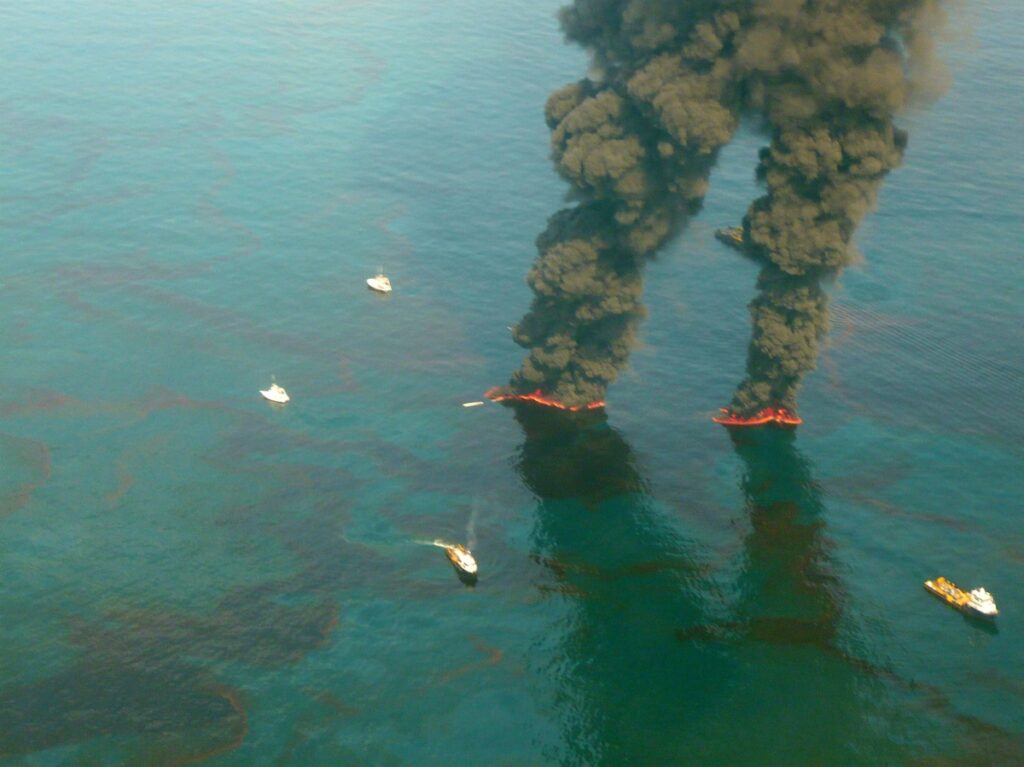The Deepwater Spiral: How BP’s Messaging Failures Amplified a Historic Environmental Crisis

It began as a burst of fire in the Gulf of Mexico. On April 20, 2010, the Deepwater Horizon oil rig exploded, killing 11 crew members and igniting a disaster that would spill more than 200 million gallons of crude oil into the sea. In the hours that followed, BP executives scrambled for answers. In the days that followed, they struggled to maintain control of a story that was quickly spiraling out of their hands.

The environmental consequences were catastrophic, but it was the communication failures that cemented the disaster in public memory. What could have been an opportunity to show leadership, transparency and responsibility became a cautionary tale in how not to manage a crisis.
A Crisis of Words, Not Just Oil
From the outset, BP’s public statements clashed with the visible reality. The company initially claimed the leak was spilling about 1,000 barrels of oil a day. Within weeks, independent estimates put the figure closer to 60,000. The discrepancy was not just a technical miscalculation. It signaled to the public that BP either didn’t understand the scope of the problem or wasn’t being honest about it.
This erosion of trust was compounded by what many saw as a clumsy, even callous, approach to public communication. Journalists covering the story were frustrated by the lack of access to accurate data, underwater footage and expert commentary. Without clear, consistent messaging from BP, the vacuum was filled by speculation, worst-case scenarios and images of oil-soaked pelicans. The company was not just losing the narrative. It was forfeiting its credibility.
BP’s then-CEO Tony Hayward became a lightning rod for criticism. His now-infamous statement, “I’d love my life back,” delivered during a television interview while cleanup crews worked around the clock, became emblematic of the company’s detachment. Intended as a moment of candor, it instead came across as self-pity from a man whose company had just caused the worst environmental disaster in U.S. history. Even his apologies, when they came, were laced with caveats and corporate-speak.
His media appearances became a case study in what happens when a spokesperson is poorly prepared, emotionally disconnected, and overly confident in controlling the message. Even when factual, his tone and delivery often undermined the content. The public didn’t want technical jargon or reassurances about future containment. They wanted accountability, empathy and clarity. They didn’t get it.
Behind the scenes, government agencies, scientists and BP engineers were all working to assess the extent of the spill. But the lack of a centralized communications strategy meant updates were fragmented, contradictory and often delayed. Press briefings were held without clear coordination. Different officials gave different numbers. Key information was buried in technical reports.
In one particularly damaging episode, BP released underwater footage of the leaking well only after pressure from media outlets and government officials. The visual was powerful, but so was the timing. The release appeared reactive rather than proactive, as though the company had only shared it under pressure. The delay fed a narrative of concealment.
Structure Beats Spin
Crisis communication is not about optics. It is about structure. In high-stakes scenarios, message control is not a matter of charisma or clever soundbites. It depends on access to accurate, up-to-date information, clear delegation of spokesperson roles, and centralized tracking of media requests and prior statements.
In BP’s case, multiple teams were managing different parts of the response: environmental cleanup, legal risk, shareholder communications and public relations. The result was a fragmented strategy that failed to unify messaging. This fragmentation not only confused the public, but also undermined the efforts of those inside the company who were genuinely working to address the disaster.
BP did eventually hire outside crisis PR experts and brought in more experienced media strategists, but by that point, the damage was done. Trust is a difficult currency to regain. Public memory is not reset by a rebrand or a spokesperson swap.
Other companies took note. In the years following the Deepwater Horizon spill, major corporations began investing in simulation-based crisis preparation, integrated comms platforms and real-time coordination systems. But the lessons didn’t need to be learned the hard way. Many of the tools that could have made a difference were already available at the time. What was lacking was integration. The various limbs of the organization moved at different speeds, spoke in different tones, and failed to present a unified front.
It is easy to dismiss communications as secondary during a crisis. But the truth is, for the outside world, communication is the crisis. The oil was below the surface. The messaging was what the world could see.
A Preventable Spiral
BP eventually spent more than $60 billion in cleanup costs, legal settlements and damages. But the reputational cost may have been higher. Public trust, once lost, is rarely restored with a check. And for years after the spill, the name BP conjured images of slick-covered wildlife and corporate evasion. It became a symbol of everything that can go wrong when truth, timing and tone fall out of sync.
For communications professionals, the lesson is clear: The story will be told, with or without you. The only question is whether your team has the infrastructure to tell it right.
It is precisely this kind of communications breakdown that underscores the need for dedicated, centralized media coordination tools. During a crisis, teams need one place to coordinate media responses, track evolving narratives and ensure that every journalist receives accurate, timely, aligned information. When something goes wrong, the ability to trace past responses, coordinate talking points and respond at the speed of news becomes mission-critical.
With Broadsight, communications teams don’t just react to coverage. They shape it. Because when the tide turns, you want to know you’re ready. See Broadsight in action today.
Receive our newsletter
Sign up below and we’ll be in touch with monthly updates about Broadsight, along with news and insights to keep you on the cutting edge of communications work in an AI era.

